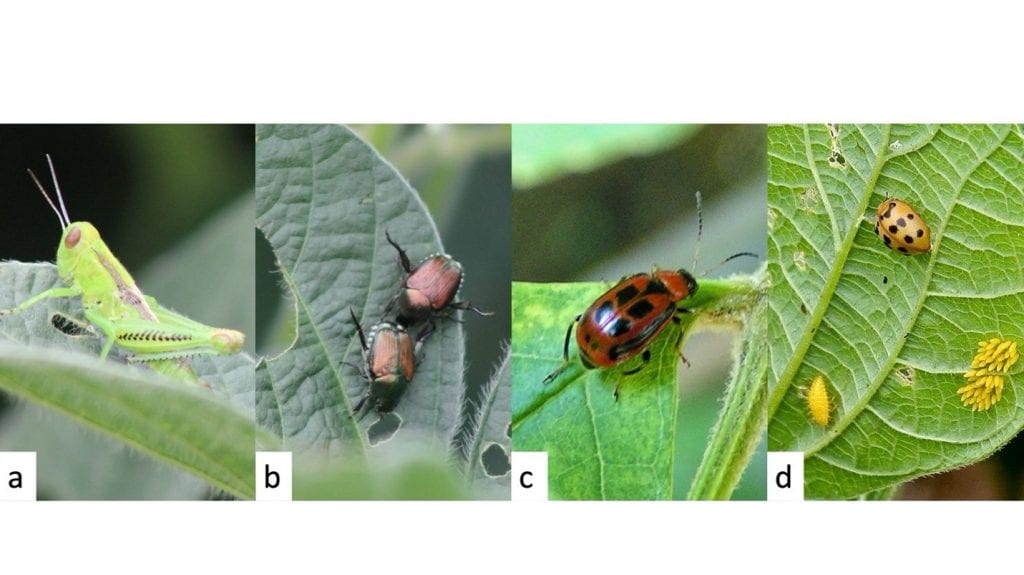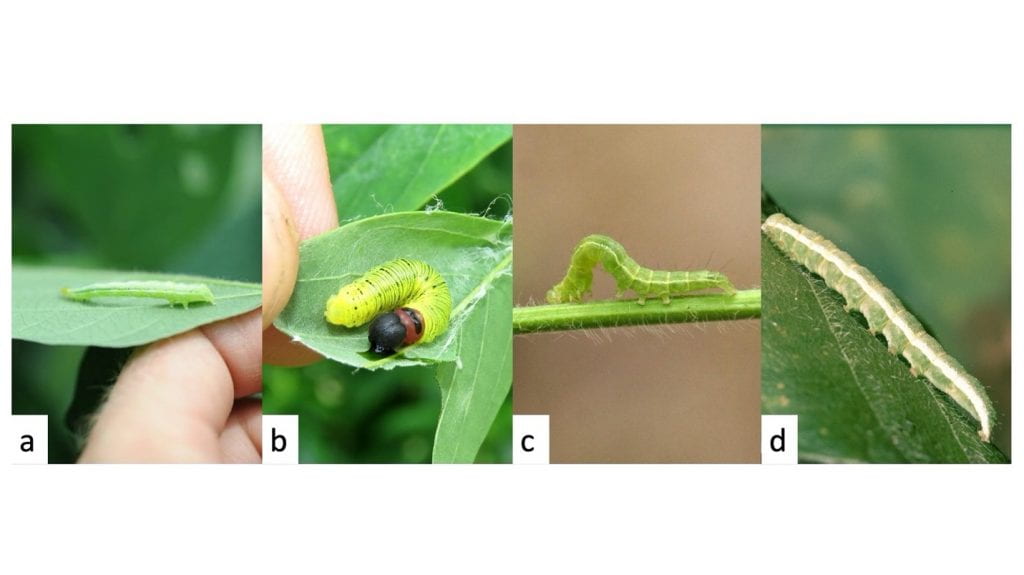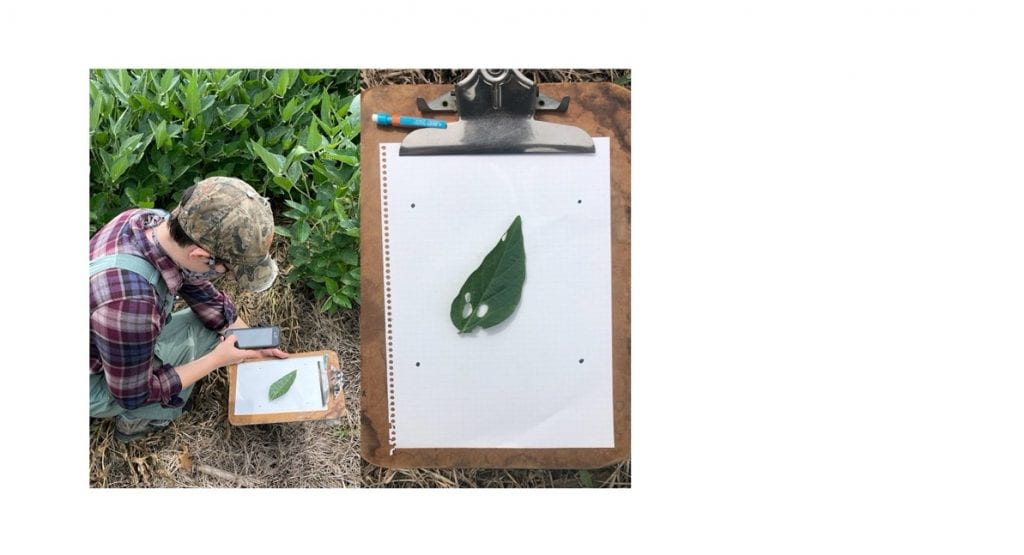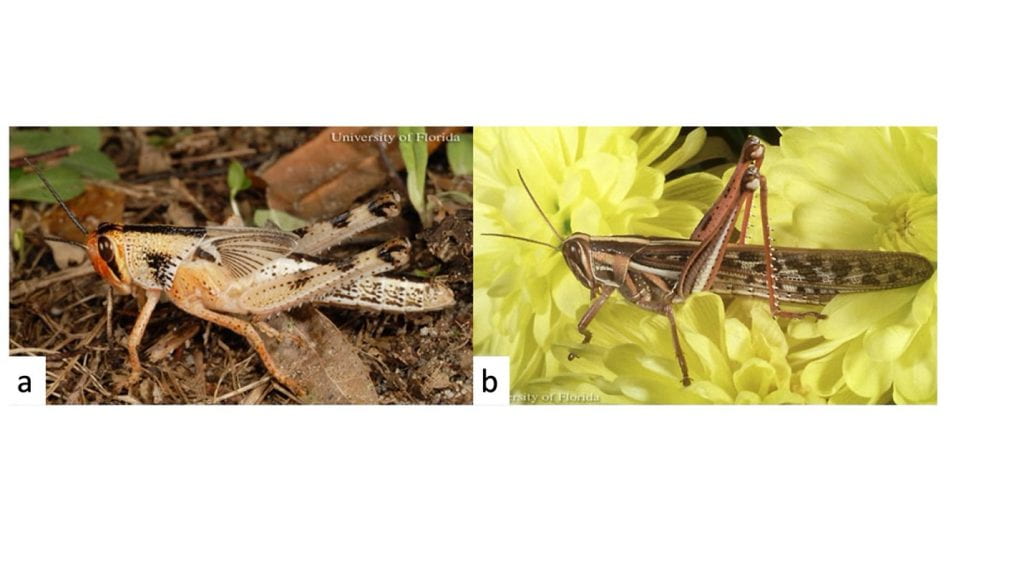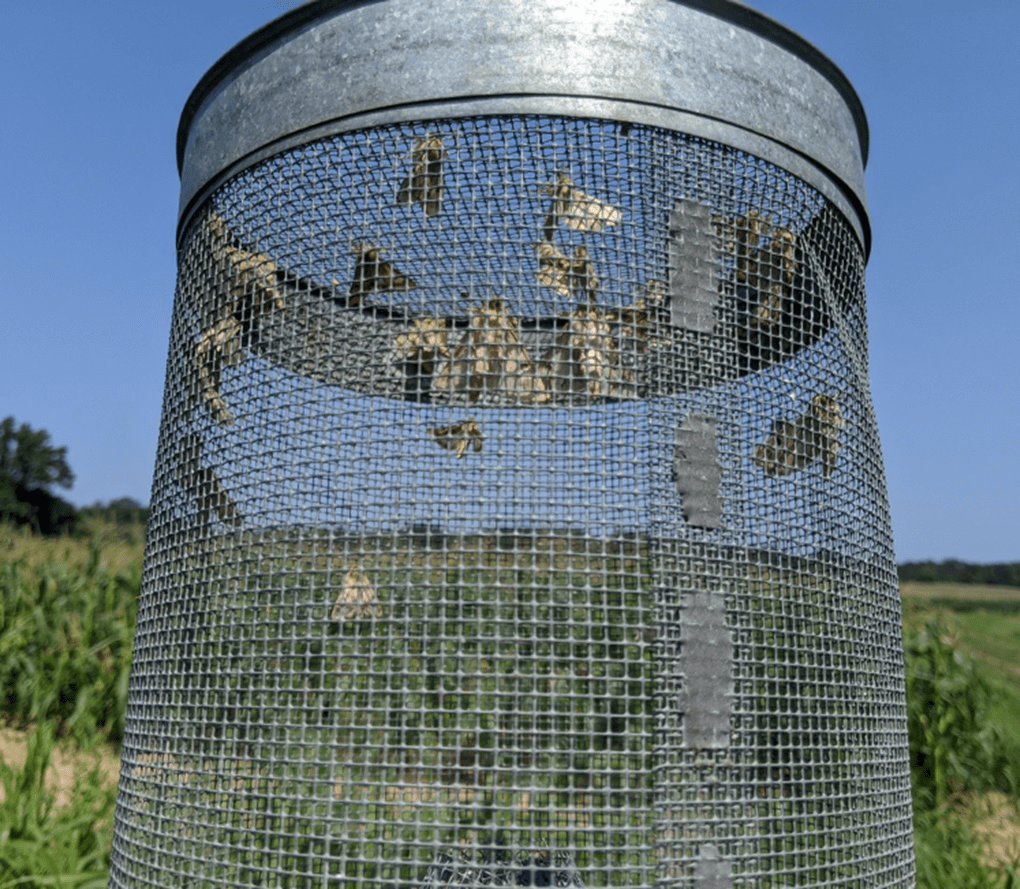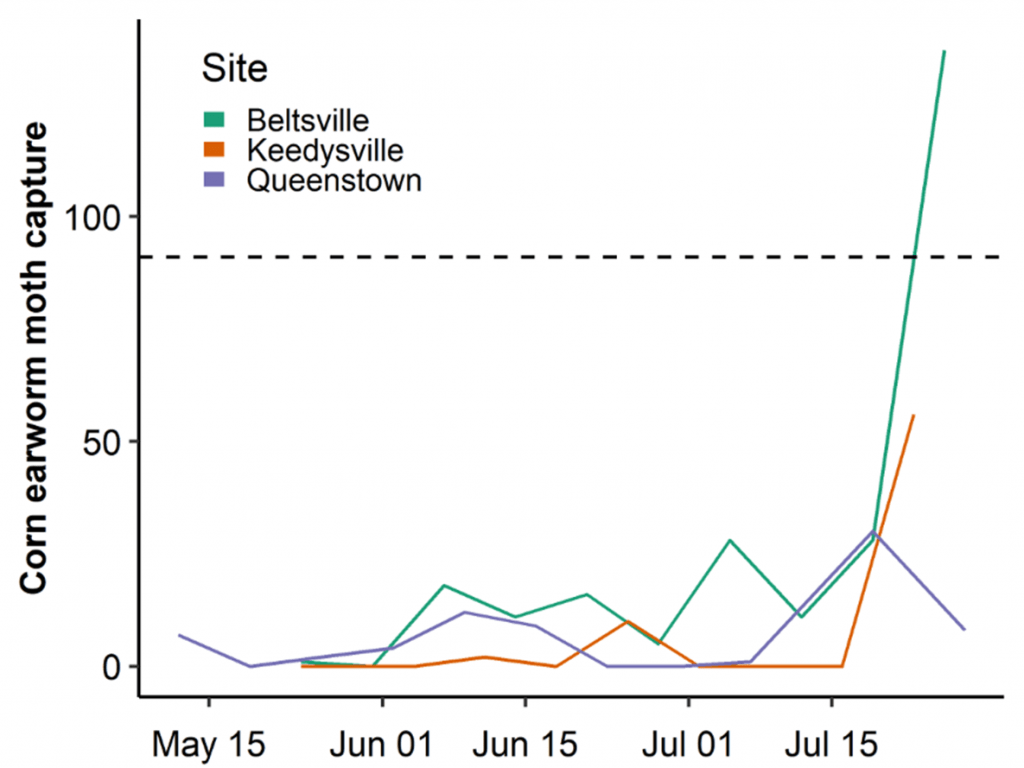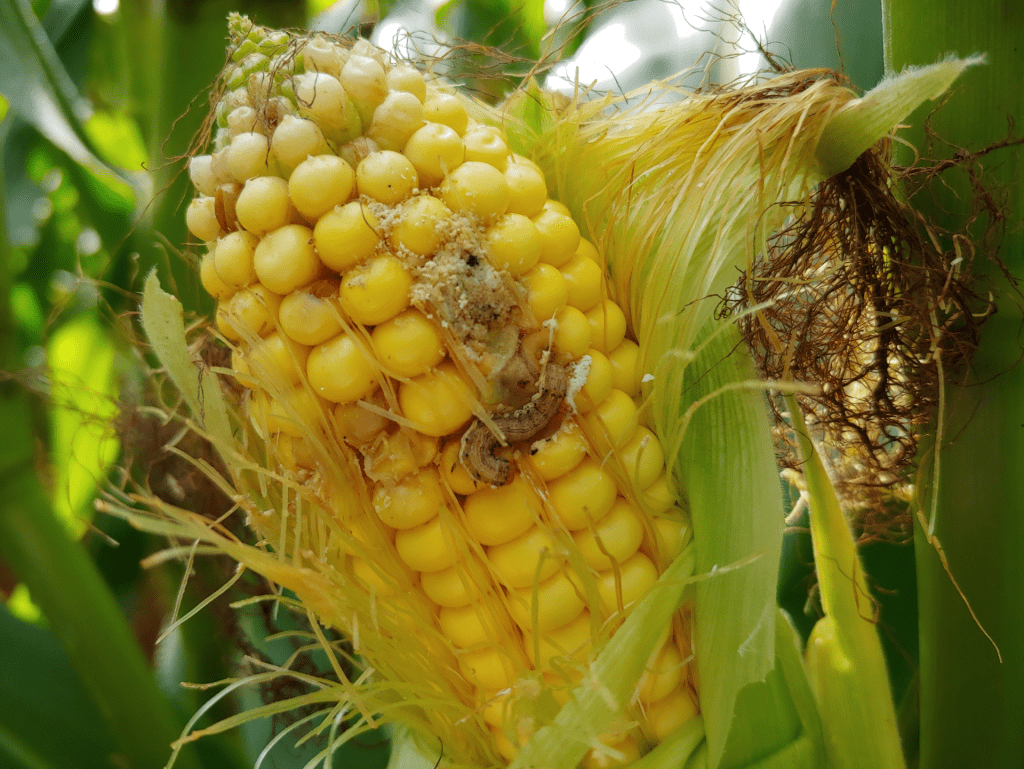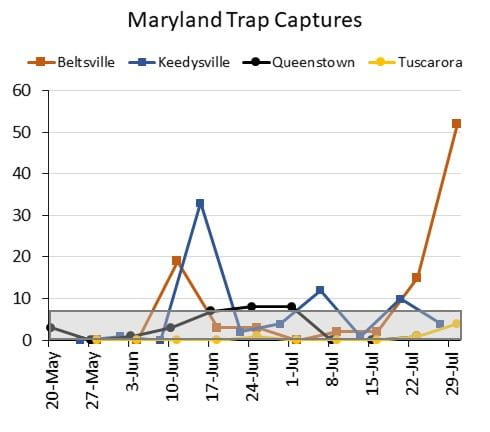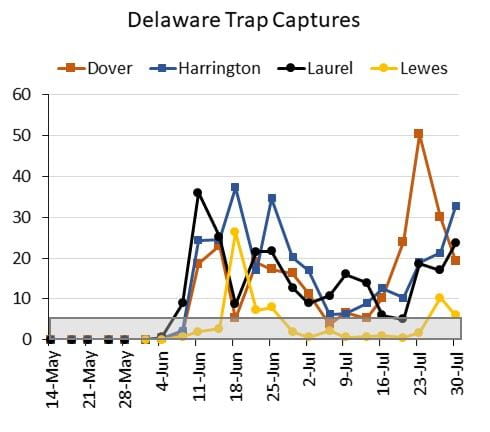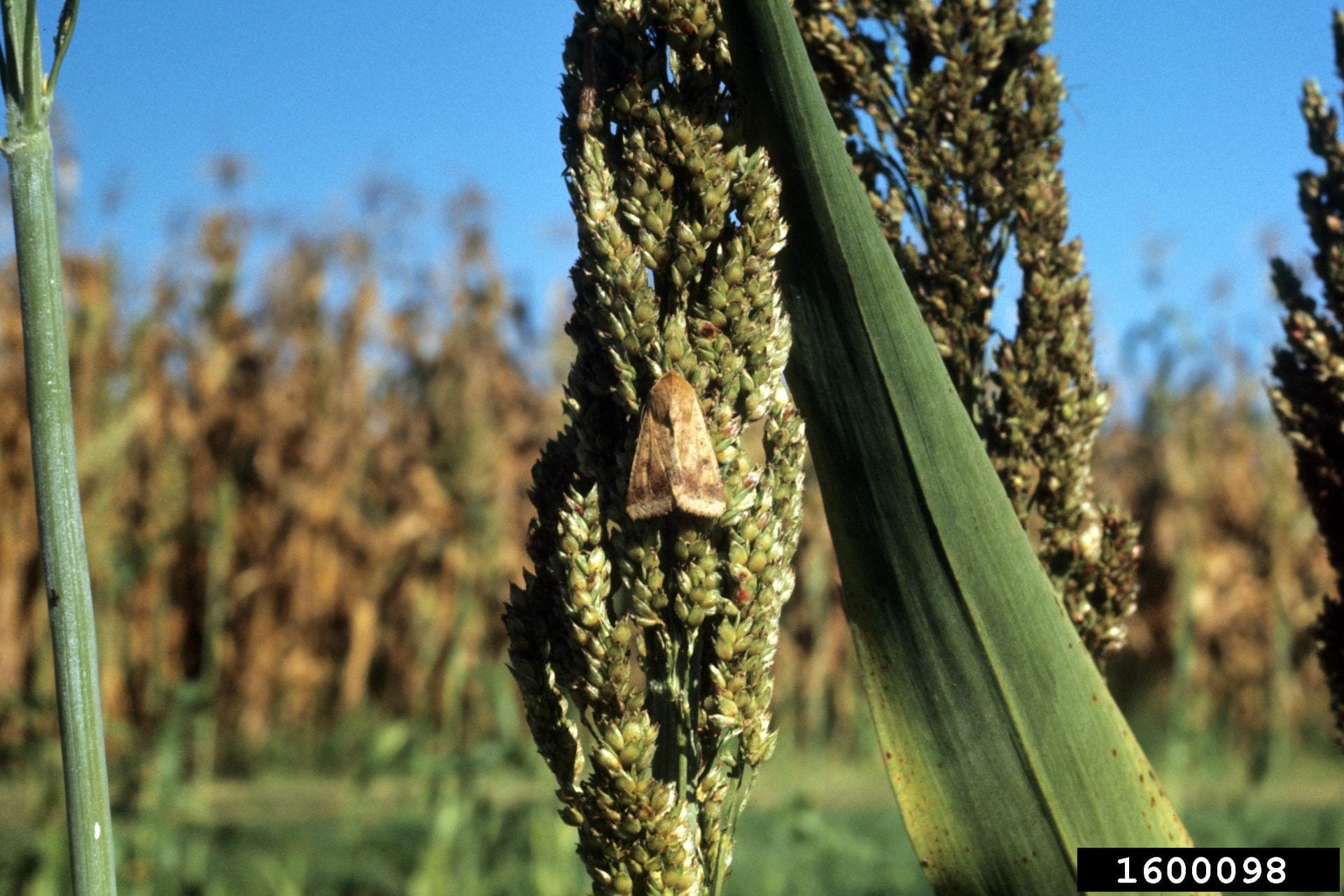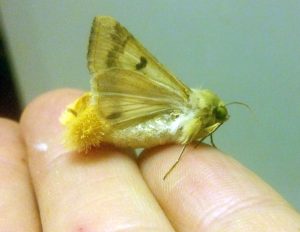David Owens, Extension Entomology Specialist, University of Delaware | owensd@udel.edu
and Kelly Hamby, Extension Entomology Specialist, University of Maryland | kahamby@umd.edu
Although sorghum faces relatively few pests compared to our other grain crops, it is not a “plant and forget” crop. Sorghum is often grown on marginal ground, in areas with greater deer pressure, dryland fields, and as a rotational component for managing weed and disease pressure. Sorghum is generally a minor component of a farming operation, and as such is easy to overlook during the season, especially now as other pests are requiring more attention and corn is nearing harvest. However, there are two significant insect pests that need to be scouted for to avoid potential losses and both are active right now on Delmarva.
The first pest that has the greatest impact on sorghum is corn earworm (Figure 1), also known as sorghum headworm (among many other crop related common names). Heads that began pollinating within the last two weeks coincided with a significant increase in earworm activity, and last week, earworm spray thresholds were exceeded in some locations in Delaware. The best way to scout for earworm is to use a ‘beat bucket’ – traditionally a 2-5 gallon bucket, although a sweep net can serve in a pinch. Gently bend the head to fit inside the bucket and shake it against the sides of the bucket several times to dislodge worms. Do this for 10 heads in a location, and 5 locations per field. Keep notes on how many larvae are small (1/4 inch or less), mid-sized (1/4 – ½ inch) and large (>1/2 inch). Texas A&M has a useful sorghum threshold calculator that takes into account control costs, grain value, and heads per acre and calculates a threshold based on the number of medium and large larvae. If your field is over threshold, we have several good options for earworm. In a 2019 spray trial, the greatest worm reductions came from Carbaryl (1.5 qts), Lannate (1.1 pints), Besiege (8 fl oz), Prevathon (now Vantacor), and Baythroid XL (2.8 fl oz). Before treating sorghum for corn earworm or the next pest of interest, remember to read labels carefully; the label is the law.

The second pest of concern is the white sugarcane aphid (Figure 2). This is a relatively new pest, and should not be confused with yellow sugarcane aphid or corn leaf aphid, both of which are common but not damaging. Yellow sugarcane aphids are bright lemon yellow, larger, and have hairs. Corn leaf aphid is a darker green color and often present in the whorl before head emergence, but quickly disappears afterward. I think of it as a beneficial insect in sorghum because lady beetles and other natural enemies get established on corn leaf aphids early. White sugarcane aphid are small, pale white-yellow, and buildup large colonies under leaves. When it is present in a field, it is obvious. Aphids produce copious honeydew which attracts flies, bees, and butterflies. It can cause yield loss as late as soft dough, particularly in drought stressed fields. So far this year in Delaware, its populations have been spotty, slow to build, and our soils for the most part have adequate moisture. There are two thresholds: 40-150 aphids per leaf or 30% of plants with aphids and scattered areas of honeydew slicks present on the upper surface of a leaf just below the aphid colony. In 2019, we found our first sugarcane aphid on August 8. By September 11, the field averaged between 227 and 644 aphids per leaf! If you recall, September 2019 was oppressively hot and dry. In 2020, sugarcane aphids were detected at the end of July and several fields were treated. I am optimistic that they will not pose as much of a threat this year, but you need to be scouting. Pay attention to any fields that are pollinating or still have heads emerging (pretty much any field you would scout for corn earworm). If you deem a field needs treating, the only good options are Sivanto, Transform, and Sefina. Sivanto has a 2ee recommendation to use at 4 fl oz, although even lower rates will work very well. Lorsban and dimethoate annoy aphids for about a week before their population increases. Pyrethroids are completely ineffective. If sorghum is going to continue serving in your rotation, reach out to your agronomist – several varieties have some level of resistance or tolerance to aphids, and this far north, that may be all we need for late sorghum.

